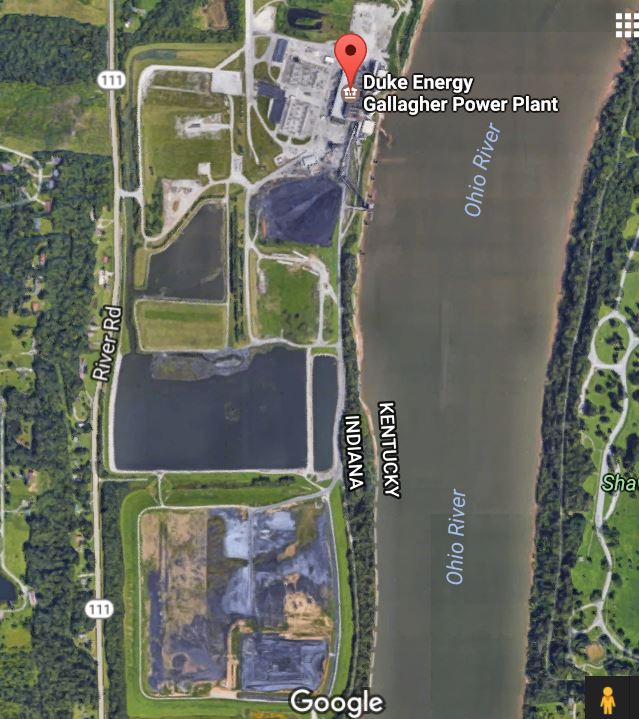
The press release from Earthjustice is reprinted verbatim, which I’m doing because it’s a very big deal, literally and figuratively, that nine million tons of coal ash reposes on the property of the soon-to-be-shuttered Gallagher Station plant, which lies precisely two miles from the Reisz Mahal.
A friend recently asked Duke Energy about the situation.
We received your question about coal ash at Gallagher Station. We’re pursuing a combination of both excavation and capping in place at Gallagher. All decisions are based on science and engineering and have to be approved by state environmental regulators. Please let us know if you have further questions.
For background, a few previous posts.
9.3 million tons of dangerous coal ash right here in Anchor City? Good thing it’s not a campaign issue.
Dan Coffey wasn’t making it up: 500,000 truck trips would be necessary to remove Duke’s toxic coal ash from the Gallagher plant’s ponds.
Tonight is the public meeting about Duke Energy’s coal ash disposal. Gahan to send summer intern with information about the Bicentennial Park Concert Series.
Here’s the release.
The EPA’s decision to hold a hearing via an online conference call with no video eliminated the ability for many people affected by the rollbacks to participate. Here’s the notice.
The rollbacks would have serious adverse impacts on the health of individuals across the country and the environment. Specifically, this proposed rollback would make it easier for utilities to keep leaking coal ash ponds operating and polluting longer and allow millions of tons of additional toxic coal ash waste to be dumped into leaking and/or dangerously sited ponds.
The decision to eliminate in-person public hearings impairs public participation. The virtual public hearing was announced online and requires that participants register and call-in via an online platform. These hearings are particularly challenging for communities with limited internet access, which coincide with communities that are disproportionately impacted by coal ash. Only having a virtual hearing strikes at the very heart of democratic, public participation – participants have no opportunity to face and speak directly to EPA officials, to use visual aids, and bring people who are very sick from exposure but aren’t up to speaking out. At the January 7, 2020 virtual hearing several commenters openly questioned whether anyone was listening to them at all. Virtual hearings can be a useful supplement to in-person hearings but should not replace them. In addition, this comment period coincided with the holidays.
These concerns led 87 public interest organizations to write EPA requesting that it hold an in-person public hearing and to extend the comment period.
EPA rejected that request in December. Meanwhile, EPA did have the time to privately meet in-person with over 50 coal industry officials on November 19, 2019.











